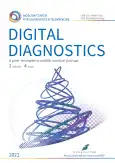在前列腺癌病例中,功能成像方法在导航远程放射治疗和近距离放射治疗中的作用越来越大
- 作者: Rumyantsev P.O.1
-
隶属关系:
- SOGAZ International Medical Center
- 期: 卷 2, 编号 4 (2021)
- 页面: 488-497
- 栏目: Editorials
- URL: https://journals.rcsi.science/DD/article/view/96197
- DOI: https://doi.org/10.17816/DD96197
- ID: 96197
如何引用文章
详细
近距离放射治疗已成功用于治疗男性和女性的恶性肿瘤,很少用于儿童,无论是单独治疗(如局限性前列腺癌)还是辅助外照射治疗(如宫颈癌、肛管癌、头颈癌、乳腺癌等)。
三维成像带来的诊断能力的扩展(计算机断层扫描和磁共振成像的出现)使近距离放射治疗比其他方法具有重要的技术优势。在第一线,近距离放射治疗与外照射或全身抗癌治疗相结合有许多选择,对于先前照射区域的局部肿瘤复发,也有单一疗法。
在手术期间引入用于间质高剂量近距离放射治疗的intrastats(空心管),并直接(经皮)封装(封闭)用于低剂量近距离放射治疗的放射性微源。
近距离放射治疗的一个显著特点是肿瘤病灶外的剂量急剧下降,从而将周围器官和组织的辐射风险降至最低。
与外束放射治疗相比,近距离放射治疗的主要优点是在肿瘤边缘(从四面八方)有更高的辐射剂量梯度。此外,无需澄清靶向照射过程中的不确定性限制:当肿瘤在治疗过程中发生变化时,固定在肿瘤中的放射源同步改变其位置。
除了疗效和安全方面的优势外,近距离治疗的总经济成本也明显低于其他放射治疗方案。
作者简介
Pavel O. Rumyantsev
SOGAZ International Medical Center
编辑信件的主要联系方式.
Email: pavelrum@gmail.com
ORCID iD: 0000-0002-7721-634X
SPIN 代码: 7085-7976
Scopus 作者 ID: 12800559900
Researcher ID: C-6647-2012
MD, Dr. Sci. (Med.)
俄罗斯联邦, 8, Malaya Konyushennaya Str., Saints-Petersburg, 191186参考
- Vu CC, Jawad MS, Krauss DJ. The cost-effectiveness and value proposition of brachytherapy. Semin Radiat Oncol. 2020;30(1):87–93. doi: 10.1016/j.semradonc.2019.08.007
- Chin J, Rumble RB, Kollmeier M, et al. et al. Brachytherapy for patients with prostate cancer: American Society of Clinical Oncology / Cancer Care Ontario joint guideline update. J Clin Oncol. 2017;35(15):1737–1745. doi: 10.1200/JCO.2016.72.0466
- Kee DL, Gal J, Falk AT, et al. Brachytherapy versus external beam radiotherapy boost for prostate cancer: systematic review with meta-analysis of randomized trials. Canc Treat Rev. 2018;70:265–271. doi: 10.1016/j.ctrv.2018.10.004
- Kishan AU, Cook RR, Ciezki JP, et al. Radical prostatectomy, external beam radiotherapy, or external beam radiotherapy with brachytherapy boost and disease progression and mortality in patients with Gleason score 9–10 prostate cancer. JAMA. 2018;319(9):896–905. doi: 10.1001/jama.2018.0587
- Abecassis JP, Ghazzar N, Peyromaure M, Giraud P. Prostate imaging: contribution of PET PSMA and MRI. Cancer Radiother. 2020;24(5):423–428. doi: 10.1016/j.canrad.2020.06.002
- Delgadillo R, Ford JC, Abramowitz MC, et al. The role of radiomics in prostate cancer radiotherapy. Strahlenther Onkol. 2020;196(10):900–912. doi: 10.1007/s00066-020-01679-9
- Cysouw MC, Jansen BH, van de Brug T, et al. Machine learning-based analysis of [18F]DCFPyL PET radiomics for risk stratification in primary prostate cancer. Eur J Nucl Med Mol Imaging. 2021;48(2):340–349. doi: 10.1007/s00259-020-04971-z
- Eiber M, Weirich G, Holzapfel K, et al. et al. Simultaneous 68Ga-PSMA HBED-CC PET/MRI Improves the Localization of Primary Prostate Cancer. Eur Urol. 2016;70(5):829–836. doi: 10.1016/j.eururo.2015.12.053
- Donato P, Roberts MJ, Morton A, et al. Improved specificity with 68Ga PSMA PET/CT to detect clinically significant lesions “invisible” on multiparametric MRI of the prostate: a single institution comparative analysis with radical prostatectomy histology. Eur J Nucl Med Mol Imaging. 2019;46(1):20–30. doi: 10.1007/s00259-018-4160-7
- Rylander S, Polders D, Steggerda MJ, et al. Re-distribution of brachytherapy dose using a differential dose prescription adapted to risk of local failure in low-risk prostate cancer patients. Radiother Oncol. 2015;115(3):308–313. doi: 10.1016/j.radonc.2015.05.015
- Hsu CC, Hsu H, Pickett B, et al. Feasibility of MR imaging/ MR spectroscopy-planned focal partial salvage permanent prostate implant (PPI) for localized recurrence after initial PPI for prostate cancer. Int J Rad Oncol Biol Phys. 2013;85(2):370–377. doi: 10.1016/j.ijrobp.2012.04.028
- Thorwarth D, Beyer T, Boellaard R, et al. Integration der FDG-PET/CT-Bildgebung in die Planung der externen Strahlentherapie ― Technische Aspekte und Empfehlungen zur methodischen Annäherung. Nuklear Med. 2012;51(4):140–153. doi: 10.3413/NUKMED-0455-11-12
- Tait LM, Hoffman D, Benedict S, et al. The use of MRI deformable image registration for CT-based brachytherapy in locally advanced cervical cancer. Brachytherapy. 2016;15(3):333–340. doi: 10.1016/j.brachy.2016.01.002
- Blanchard P, Ménard C, Frank SJ. Clinical use of magnetic resonance imaging across the prostate brachytherapy workflow. Brachytherapy. 2017;16(4):734–742. doi: 10.1016/j.brachy.2016.11.012
- Schernberg A, Kumar T, Achkar S, et al. Incorporating Magnetic Resonance Imaging (MRI) based radiation therapy response prediction into clinical practice for locally advanced cervical cancer patients. Sem Radiat Oncol. 2020;30(4):291–299. doi: 10.1016/j.semradonc.2020.05.007
- Park H, Meyer CR, Wood D, et al. Validation of automatic target volume definition as demonstrated for 11C-Choline PET/CT of human prostate cancer using multi-modality fusion techniques. Acad Radiol. 2010;17(5):614–623. doi: 10.1016/j.acra.2010.01.003
- Fassbender TF, Schiller F, Zamboglou C, et al. Voxel-based comparison of [68Ga]Ga-RM2-PET/CT and [68Ga]Ga-PSMA-11-PET/ CT with histopathology for diagnosis of primary prostate cancer. EJNMMI Res. 2020;10(1):62. doi: 10.1186/s13550-020-00652-y
- Aerts HJ, Bussink J, Oyen WJ, et al. Identification of residual metabolic-active areas within NSCLC tumours using a pre-radiotherapy FDG-PET-CT scan: a prospective validation. Lung Cancer. 2012;75(1):73–76. doi: 10.1016/j.lungcan.2011.06.003
- Lucia F, Miranda O, Abgral R, et al. Use of baseline 18F-FDG PET/ CT to identify initial sub-volumes associated with local failure after concomitant chemoradiotherapy in locally advanced cervical cancer. Front Oncol. 2020;10:678. doi: 10.3389/fonc.2020.00678
- Gardin I. Methods to delineate tumour for radiotherapy by fluorodeoxyglucose positron emission tomography. Canc Radiother. 2020;24(5):418–422. doi: 10.1016/j.canrad.2020.04.008
- Brown AP, Pugh TJ, Swanson DA, et al. Improving prostate brachytherapy quality assurance with MRI-CT fusion-based sector analysis in a phase II prospective trial of men with intermediate-risk prostate cancer. Brachytherapy. 2013;12(5):401–407. doi: 10.1016/j.brachy.2012.10.001
补充文件









